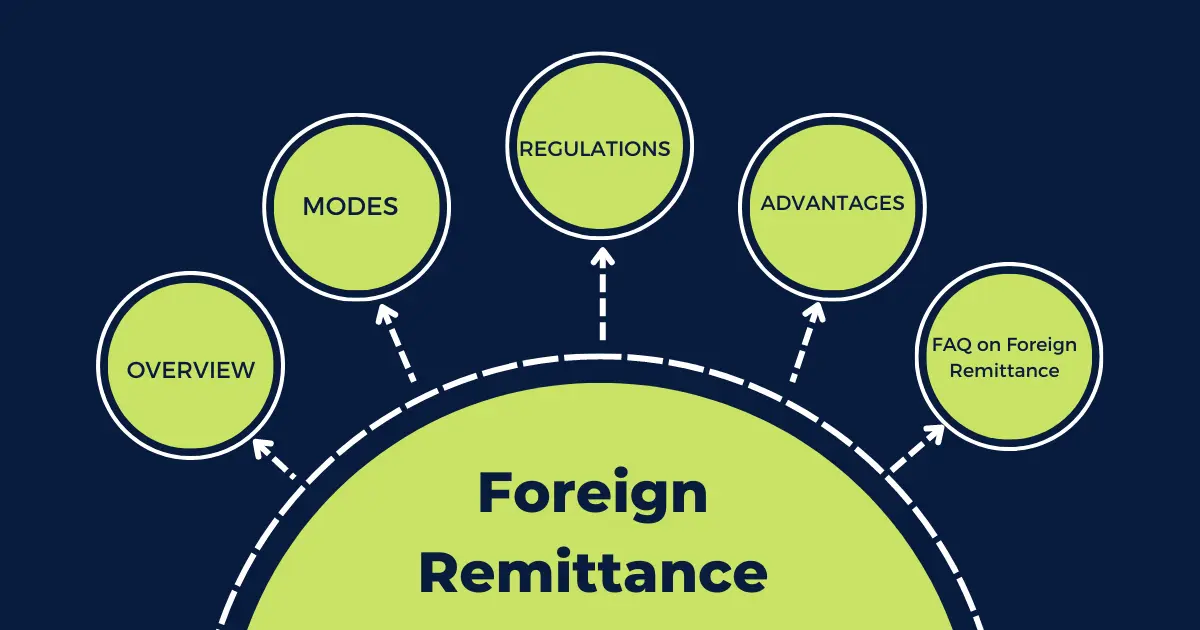Foreign Remittance: A Detailed Guide for Indian Nationals

Summary: Discover how easy global money transfers can be! The blog highlights your go-to remittance partner, Orient Exchange’s competitive rates, low fees, RBI-compliant process, and seamless documentation—making every remittance fast, secure, and customer-friendly.
Table Of Content▼
Table Of Content
Foreign remittance refers to the transfer of money by an individual or a company from one country to another. In the Indian context, foreign remittance has been gaining significant importance over the years, owing to the large number of people migrating to foreign countries in search of better education, health, employment and other opportunities.
In this article, we will delve into the various aspects of foreign remittance from India.
Overview of Foreign Remittance from India
Foreign remittance from India can be broadly classified into two categories – inward remittance and outward remittance. Inward remittance refers to the money sent by an individual or a company from a foreign country to India, while outward remittance refers to the transfer of money from India to a foreign country.
Outward remittance, plays a significant role in Indian economy, as it is mostly done by individuals or companies in India for various purposes such as education, medical treatment, travel, and investment. According to the Reserve Bank of India (RBI), the total outward remittance from India in 2020-21 was $13.78 billion. The major destinations for outward remittance from India are the USA, Canada, UAE, UK, and Australia.
On other hand Inward remittance also crucial factor for India's economy, as it is a vital source of foreign exchange earnings. Inward remittance mainly comes from three sources – Non-Resident Indians (NRIs), Persons of Indian Origin (PIOs), and foreign nationals.
NRIs and PIOs account for the majority of the inward remittance to India. According to the World Bank, India received around $83 billion in remittances in 2020, making it the highest recipient of remittances globally. This amount accounted for around 3% of India's GDP. The major sources of inward remittance to India are the USA, UAE, Saudi Arabia, UK, and Canada.
Modes of sending foreign Remittance from India
Foreign remittance from India can be done through various channels such as Online Platforms, money transfer operators (MTOs) and banks. Let's take a closer look at each of these channels.
Online Platforms:
Online platforms such as Orient Exchange have gained more popularity in recent years. These platforms offer competitive exchange rates and charge lower fees compared to banks and MTOs. Online platforms are popular among tech-savvy individuals who prefer the convenience of digital transactions.
Money Transfer Operators (MTOs):
MTOs are also important mode of foreign remittance in India. MTOs are popular among people who want to send small amounts of money quickly. MTOs charge lower fees compared to banks.
Banks:
Banks are another mode of foreign remittance in India. Banks offer various options for foreign remittance such as wire transfer, online transfer, and demand drafts. The advantage of using banks for foreign remittance is that it is secure and reliable. However, banks charge higher fees compared to other channels.

Regulations to send Foreign Remittance from India
The RBI has laid down several regulations for foreign remittance from India to ensure that the process is transparent and secure. Here are some of the key regulations that individuals and entities involved in foreign remittance from India must adhere to:
Licensing:
Any entity, including banks and other institutions, involved in foreign remittance from India must obtain a license from the RBI to operate in the market.
KYC (Know Your Customer):
KYC is an essential requirement for foreign remittance in India. The RBI mandates that banks and other entities involved in foreign remittance from India must verify the identity of the remitter and the beneficiary through appropriate documents, such as PAN card, passport, and Aadhaar card. This helps to prevent money laundering and other illegal activities.
Limits on Outward Remittance:
The RBI has set limits on the amount of outward remittance that an individual or a company can make in a financial year. For instance, under LRS scheme the annual limit for an individual for remittance is USD 250,000.
Reporting Requirements:
Banks and other entities involved in foreign remittance from India are required to report all transactions to the RBI. The reporting requirements vary depending on the nature of the transaction and the amount involved.
Exchange Control Regulations:
The RBI has established exchange control regulations that govern foreign remittance from India. These regulations aim to ensure that the foreign exchange market operates smoothly and transparently. For example, banks and other entities involved in foreign remittance from India must ensure that the exchange rates offered to customers are transparent and based on market rates.
Advantages and Disadvantages of Foreign Remittance from India
Foreign remittance from India has several advantages, including:
Supports families:
Foreign remittance enables families to receive financial support from their loved ones working abroad. This helps to improve the standard of living of the beneficiaries.
Helps in education and healthcare:
Foreign remittance can be used to pay for education and healthcare expenses. This can be especially beneficial for individuals who may not have access to good education and healthcare facilities in their home country.
Diversification of income:
Foreign remittance enables individuals to diversify their sources of income. This can help to reduce dependence on a single source of income and improve financial stability.
Boosts the economy:
Foreign remittance is a vital source of foreign exchange earnings for India. It helps to strengthen the country's balance of payments and boosts the economy.
Also Read: Purposes for Sending Money Abroad
Keep in Mind while sending Foreign Remittance
High transaction costs:
Banks and other entities involved in foreign remittance from India charge high fees, which can be a significant burden for individuals sending small amounts of money.
Exchange rate risks:
Exchange rates fluctuate constantly, which can lead to the sender and receiver of the remittance getting a different exchange rate than expected.
Illegal activities:
The foreign remittance industry is susceptible to illegal activities such as money laundering and terrorist financing. This can be a concern for regulators and law enforcement agencies.
Conclusion
Foreign remittance from India is an essential requirement for individuals who wants to migrate to the foreign countries and there are several modes of remittance available for individuals and companies.
However, foreign remittance is subject to various regulations and reporting requirements, and individuals and entities involved in the industry must adhere to these regulations to ensure that the process is transparent and secure.
FAQ:
►What are the modes of foreign remittance available for residents of India?
Residents of India can use various modes of foreign remittance, such as wire transfer, online money transfer services, mobile wallets, and prepaid cards.
►Can Non-Resident Indians (NRIs) send money from India to their home country?
Yes, NRIs can send money from India to their home country. They can do so through authorized dealers, banks, and other financial institutions.
►What are the charges for foreign remittance from India?
The charges for foreign remittance from India vary depending on the mode of transfer and the amount being sent. Banks and other financial institutions charge a fee for the service, which may be a flat rate or a percentage of the transaction amount.
►What is the time frame for foreign remittance to be credited to the beneficiary's account?
The time frame for foreign remittance to be credited to the beneficiary's account varies depending on the mode of transfer and the destination country. It can take anywhere from a few hours to several days for the funds to be credited.
• · ✦ · • Article Ends Here • · ✦ · •
Contact Us